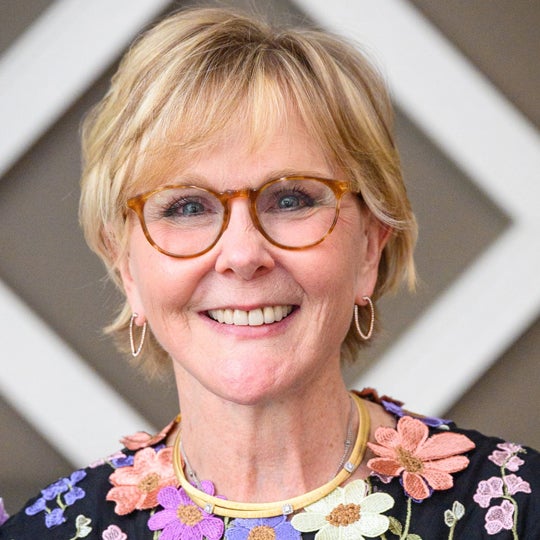What’s Next in Philanthropy in 2022

The past two years have given us a sense of humility when it comes to predictions, but we shouldn’t let the pandemic limit our charitable aspirations or imaginations. As I reflect on last year, I am stunned and often deeply troubled about the world around me. That is why it is so important to think about what kind of future we aspire to create.
Philanthropy and the charitable sector work to address our society’s many complex and overlapping challenges. Never has that work been more important, or more complicated. We all need to plan, whether it is for current, sobering realities or exciting new advances.
In that spirit, I offer a handful of predictions for 2022, and what will be another year of incredible change.
The long recovery will continue to change giving
The persistence of the pandemic has propelled funders and nonprofits alike to think carefully about resource allocation and new work environments. Because the impact of the pandemic is likely to reverberate for years, we’ve been forced to adapt to a changed new reality, not just a single health challenge. In 2022, donors will ask themselves: how has COVID-19 impacted the causes most important to me? And do I need to change how I give?
According to a recent New York Times article, charitable organizations are facing pressure on salaries that can’t compete with the private sector; social isolation and other factors are contributing to employee morale and burnout issues. Nonprofit leaders need talented staff to accomplish their mission-focused work. Leadership will have to be nimble and creative in their responses, draw resources and support from boards and staff and tap into external ideas to minimize the impact of these troubling trends.
For their part, donors can give unrestricted support, allowing organizations to retain, train, and reward staff. Institutional funders are shortening application and reporting paperwork and trusting organizations to make wise decisions about how to allocate funds rather than giving tightly prescriptive oversight. Though not yet entirely the standard practice, I predict unrestricted, sustained support will continue in the short term, and I encourage donors to engage in it.
Giving will go “digital-first” but middle-class giving will risk further decline
Nonprofit fundraisers have done a commendable job adapting their traditionally relationship-based business to a “digital-first” model; and it will be the new standard. Online donations were up more than 20% in the last year, now representing a still small 13% of all giving.
As we experience growing inflation and market volatility, and as so many manage household financial pressures, middle class giving will likely ebb in the coming year. A 2019 survey found that a drop in giving since 2000 meant twenty million fewer households were making charitable donations. While fewer donors are giving, overall dollars donated are increasing. While U.S. donors made a record $471 billion to charitable contributions in 2020, we know that ultra-high net worth donors represent an increasingly large share of that giving. We need to find ways to invite those twenty million middle class households back into the philanthropic community. Part of this needs to involve policy changes including tax incentives that will motivate them to return to their role as donors. It can’t be fundraisers’ work alone.
Our definition of philanthropy will expand
Can we expand the definition of charitable giving to include everyday acts of generosity, beyond what’s counted on tax returns? Mutual aid and giving circles are two very common giving traditions but aren’t always counted in the tax return data. These models were amplified during the pandemic and are growing in popularity.
Philanthropy scholar and futurist Lucy Bernholz’s recent book, How We Give Now, outlines these trends in a wide-ranging collection of interviews and observations. She conducted a massive survey of interviews with everyday people across American towns and cities and concluded that U.S. citizens are philanthropic in ways that far exceed total dollars donated. We need to capture that spirit and count that data.
I predict a more inclusive definition of giving will gain momentum in 2022. We don’t have a choice. As so many aspects of our lives have been reimagined over the past few years; the way we count giving must be reframed, too.
Racial equity giving will continue and new metrics will emerge
Among the most important events in our sector, and society at large, has been a vast new commitment to racial equity. Record amounts have been committed, but what really matters are the outcomes of these granted dollars—the actual difference these efforts make in peoples’ lives. Outcomes are key to understanding the impact of philanthropic dollars and they are much harder to quantify than outputs.
Program evaluation often depends on longitudinal studies, but I don’t believe we have the patience for those anymore, nor are funders requiring them as frequently as before. So what programs are most effective at reducing racial inequities? How do we know that and how can we replicate those results? What are the unexpected consequences of our amplified efforts? How can we best learn from the amplified funding over the past few years? I predict that we will see a slate of new ways to measure progress that takes longer-term outcomes into account.
Giving and tech will align in new ways
The previous year delivered a series of surprises via new technology, as well as the need for a constantly evolving glossary of new terms. I watch with great fascination the variety of cryptocurrencies, the advent of non-fungible tokens (NFTs) and the growth of the metaverse. Like the debut of the web many years ago, we are at the tip of the iceberg on how this will affect the social sector.
How will the metaverse, virtual reality integration and the emerging new currencies affect donors and nonprofits? How will nonprofit staff members engage with their stakeholders and constituencies? Will we be using gamification to provide therapy and mental health services? Or virtual reality to teach both in kindergarten classrooms and at colleges? Digital communication has taken over much of how we work, how we shop, and how we engage with friends and family. We will experience rapid change, next year and beyond, and these developments will begin to impact how we learn, influence, and care for others in major ways.
No time to give up
The pandemic has accelerated the pace of change both for ill and for good. Think about where we are now compared to this time last year, particularly in terms of rapid innovations like the COVID-19 vaccines. Now imagine where we’ll be one year from now. I am heartened and inspired by our adaptability and fortitude. If the recent past has taught us anything, it’s that we need to celebrate our progress just as often as we creatively, and nimbly, prepare for what’s to come.
NPT does not provide legal or tax advice. This blog post is for informational purposes only and is not intended to be, and shall not be relied upon as, legal or tax advice. The applicability of information contained here may vary depending on individual circumstances.


